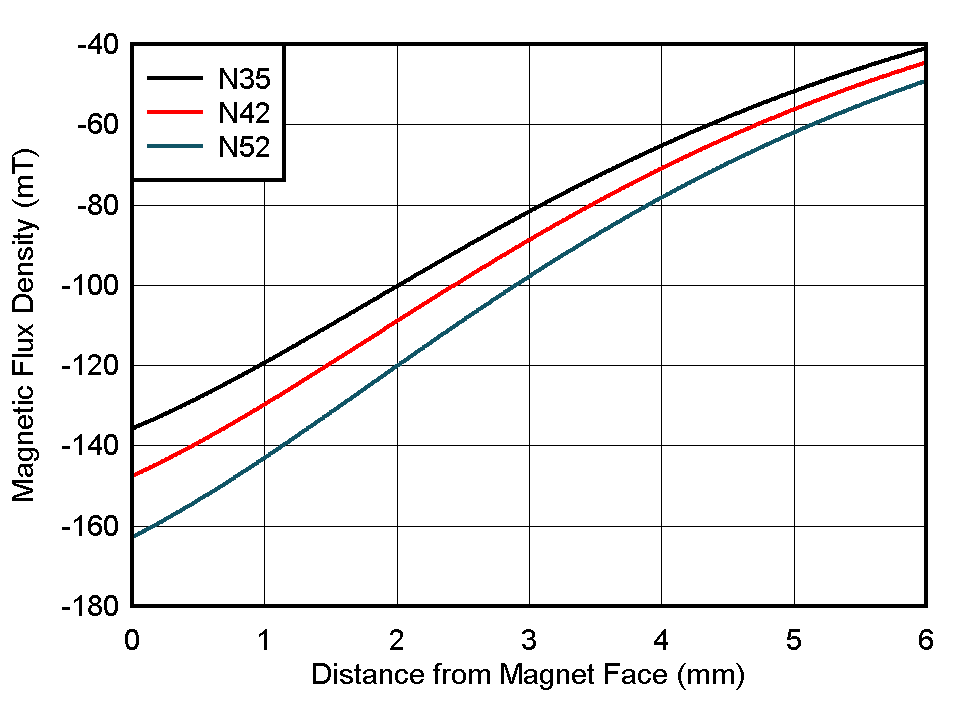SBAA463A january 2021 – april 2023 TMAG5170 , TMAG5170-Q1 , TMAG5170D-Q1 , TMAG5173-Q1 , TMAG5273
4.1.2 Magnet Selection
As previously mentioned, the magnet for the design needed to be 1/2 inch in diameter while providing enough magnetic flux density to operate near full scale input of the ±100 mT input range. It is best to leave headroom in the design to allow for variations, so a rough target of about 90% was chosen to guide magnet selection.
Even within this restriction, there is still a fair amount of flexibility regarding magnet thickness, magnet material, and the air gap between the magnet and sensor. For this diameter magnet, 1/8 in is a common available thickness that is available in multiple material types and is easily handled during assembly.
With a magnet geometry selected, simulations of magnetic flux density for various materials and air gaps were run to determine the remaining variables.
 Figure 4-2 Push-Button Knob Proximity
Simulation
Figure 4-2 Push-Button Knob Proximity
SimulationBased on these results, the N42 material was selected to use at an distance of 3 mm from the sensor.